A Brief History of Anti-Fascism
As long as the ideology has threatened marginalized communities, groups on the left have pushed back with force
/https://tf-cmsv2-smithsonianmag-media.s3.amazonaws.com/filer/6b/cb/6bcb7c80-7cef-46f7-a330-3a79e799c1e1/gettyimages-466702193.jpg)
Eluard Luchell McDaniels traveled across the Atlantic in 1937 to fight fascists in the Spanish Civil War, where he became known as “El Fantastico” for his prowess with a grenade. As a platoon sergeant with the Mackenzie-Papineau Battalion of the International Brigades, the 25-year-old African American from Mississippi commanded white troops and led them into battle against the forces of General Franco, men who saw him as less than human. It might seem strange for a Black man to go to such lengths for the chance to fight in a white man’s war so far from home—wasn’t there enough racism to fight in the United States?—but McDaniels was convinced that anti-fascism and anti-racism were one and the same. “I saw the invaders of Spain [were] the same people I’ve been fighting all my life," Historian Peter Carroll quotes McDaniels as saying. "I’ve seen lynching and starvation, and I know my people’s enemies.”
McDaniels was not alone in seeing anti-fascism and anti-racism as intrinsically connected; the anti-fascists of today are heirs to almost a century of struggle against racism. While the methods of Antifa have become the object of much heated political discourse, the group’s ideologies, particularly its insistance on physical direct action to prevent violent opression, are much better understood when seen in the framework of a struggle against violent discrimination and persecution began almost a century ago.
Historian Robert Paxton’s Anatomy of Fascism—one of the definitive works on the subject—lays out the motivating passions of fasicsm, which include “the right of the chosen group to dominate others without restraint from any kind of human or divine law”. At its heart, fascism is about premising the needs of one group, often defined by race and ethnicity over the rest of humanity; anti-fascists have always opposed this.
Anti-fascism began where fascism began, in Italy. Arditi del Popolo—"The People’s Daring Ones”—was founded in 1921, named after the Italian army’s shock troops from World War I who famously swam across the Piave River with daggers in their teeth. They committed to fight the increasingly violent faction of blackshirts, the forces encouraged by Benito Mussolini, who was soon to become Italy’s fascist dictator. The Arditi del Popolo brought together unionists, anarchists, socialists, communists, republicans and former army officers. From the outset, anti-fascists began to build bridges where traditional political groups saw walls.
Those bridges would quickly extend to the races persecuted by fascists.
Once in government, Mussolini began a policy of "Italianization" that amounted to cultural genocide for the Slovenes and Croats who lived in the northeastern part of the country. Mussolini banned their languages, closed their schools and even made them change their names to sound more Italian. As a result, the Slovenes and Croats were forced to organize outside of the state to protect themselves from Italianization, and allied with anti-fascist forces in 1927. The state responded by forming a secret police, the Organizzazione per la Vigilanza e la Repressione dell'Antifascismo, the Organization for vigilance and repression of anti-fascism (OVRA), which surveilled Italian citizens, raided opposition organizations, murdered suspected anti-fascists, and even spied on and blackmailed the Catholic Church. Anti-fascists would face off against the OVRA for 18 years, until an anti-fascist partisan who used the alias Colonnello Valerio shot Mussolini and his mistress with a submachine gun in 1945.
Similar dynamics presented themselves as fascism spread across pre-war Europe.
The leftists of Germany’s Roter Frontkämpferbund (RFB) first used the famous clenched-fist salute as the symbol of their fight against intolerance; when, in 1932, they became Antifaschistische Aktion, or “antifa” for short, they fought Nazi anti-Semitism and homophobia under the flags with the red-and-black logo that antifa groups wave today. That fist was first raised by German workers, but would go on to be raised by the Black Panthers, Black American sprinters Tommy Smith and John Carlos at the 1968 Olympics and Nelson Mandela, among many others.
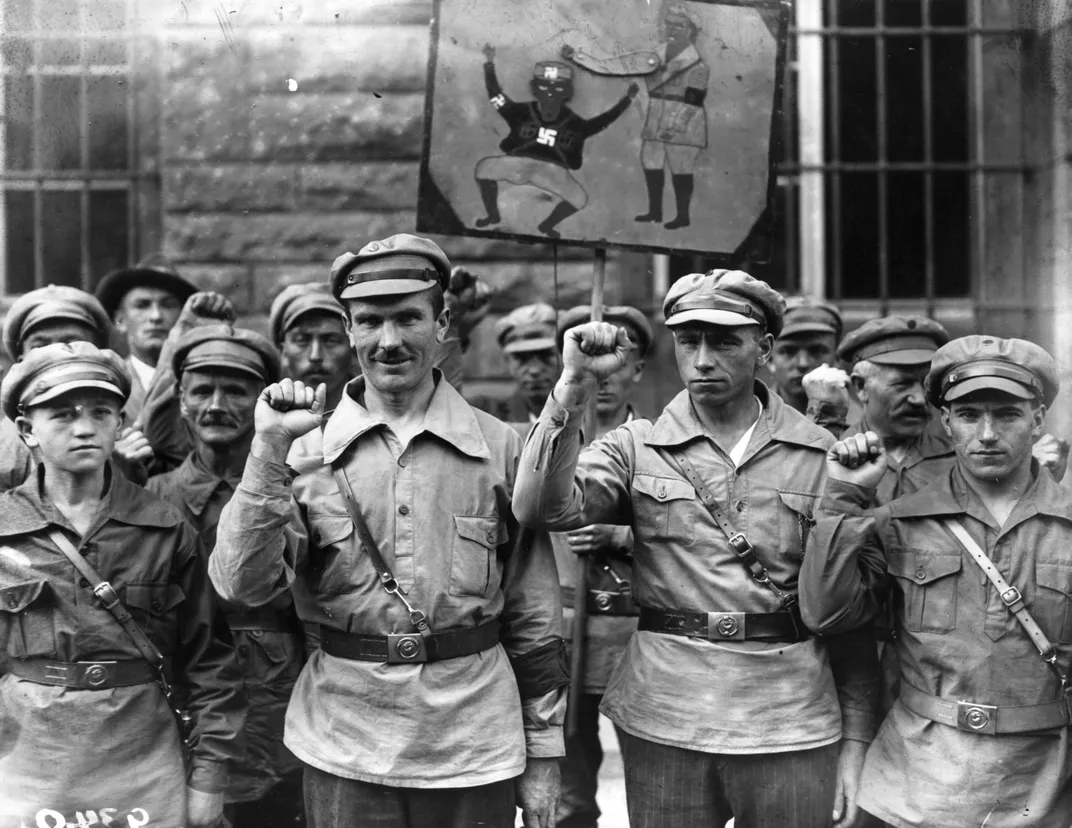
In Spain, anti-fascist tactics and solidarity were put to the test in 1936, when a military coup tested the solidarity among working and middle class groups who were organized as a board based popular front against fascism. The anti-fascists stood strong and became an example of the power of the people united against oppression. In the early days of the Spanish Civil War, the Republican popular militia was organized much like modern antifa groups: They voted on important decisions, allowed women to serve alongside men and stood shoulder to shoulder with political adversaries against a common enemy.
Black Americans like McDaniels, still excluded from equal treatment in the U.S. military, served as officers in the brigades of Americans who arrived in Spain ready to fight against the fascists. Overall, 40,000 volunteers from Europe, Africa, the Americas and China stood shoulder to shoulder as antifascist comrades against Franco’s coup in Spain. In 1936 there were no black fighter pilots in the U.S., yet three black pilots—James Peck, Patrick Roosevelt, and Paul Williams—volunteered to fight the fascists in the Spanish skies. At home, segregation had prevented them from achieving their goals of air combat, but in Spain they found equality in the anti-fascist ranks. Canute Frankson, a black American volunteer who served as head mechanic of the International Garage in Albacete where he worked, summed up his reasons for fighting in a letter home:
We are no longer an isolated minority group fighting hopelessly against an immense giant. Because, my dear, we have joined with, and become an active part of, a great progressive force on whose shoulders rests the responsibility of saving human civilization from the planned destruction of a small group of degenerates gone mad in their lust for power. Because if we crush Fascism here, we’ll save our people in America, and in other parts of the world from the vicious persecution, wholesale imprisonment, and slaughter which the Jewish people suffered and are suffering under Hitler’s Fascist heels.
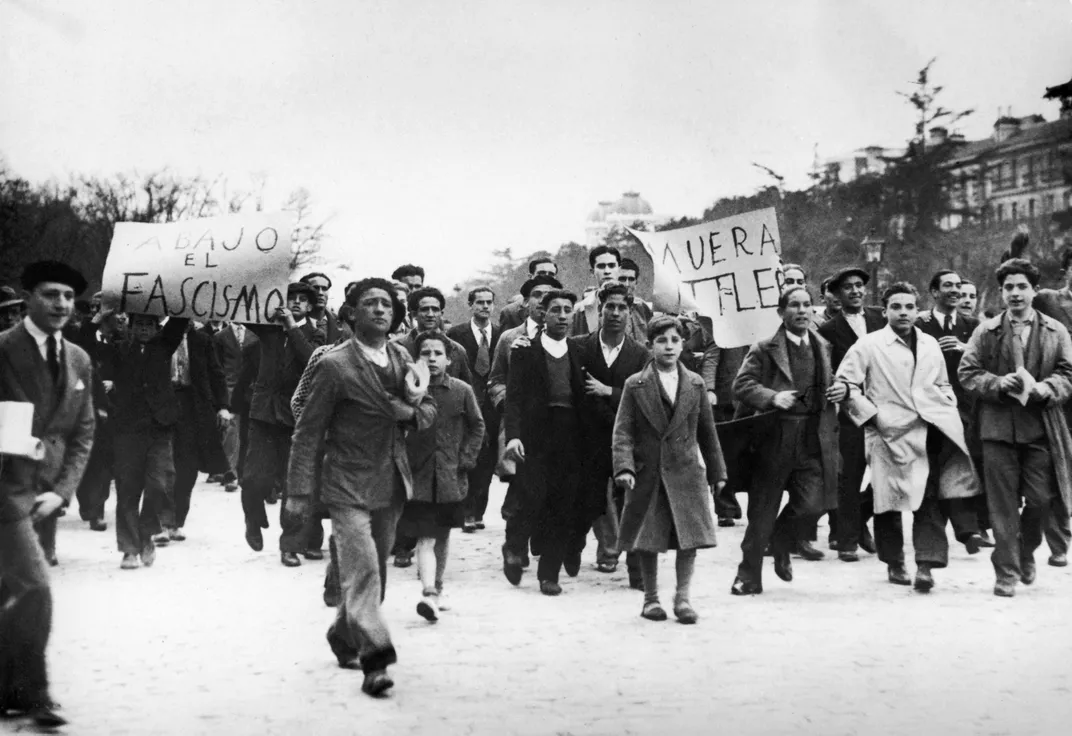
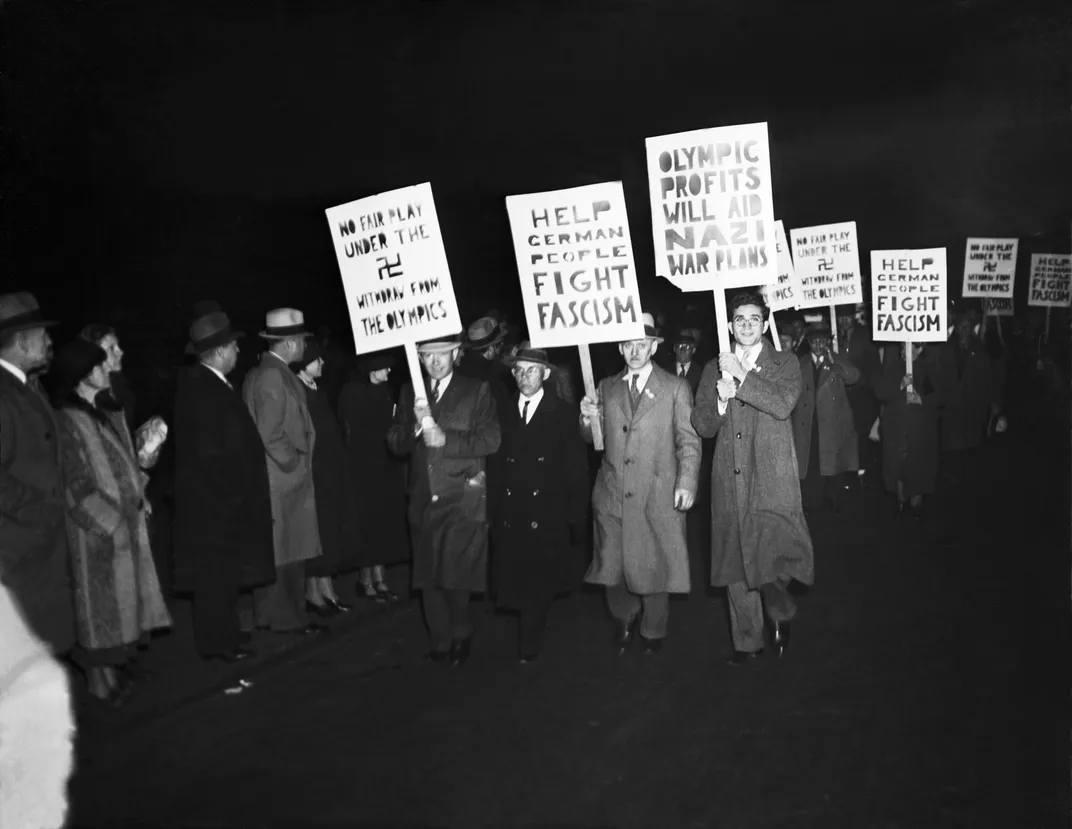
In the United Kingdom, anti-fascists became an important movement as anti-Semitism emerged as a salient force. In October 1936, Oswald Mosley and the British Union of Fascists attempted to march through Jewish neighborhoods in London. Mosley's 3,000 fascists, and the 6,000 policemen who accompanied them, found themselves outnumbered by the anti-fascist Londoners who had turned out to stop them. Estimates of the crowd vary from 20,000 to 100,000. Local children were recruited to roll their marbles under the hooves of police horses, while Irish dockworkers, Eastern European Jews, and leftist workers stood side-by-side to block the marchers' progress. They raised their fists, like German anti-fascists, and chanted “No pasaran” ("They shall not pass!", the slogan of the Spanish militia), and they sung in Italian, German and Polish. They succeeded: The fascists did not pass, and Cable Street became a symbol of the power of a broad anti-fascist alliance in shutting down fascist hate speech on the streets.
During the Second World War, anti-fascism passed into its second stage, as it moved from the streets to stand alongside those in the seats of power. Winston Churchill and other imperialists stood against fascism even as they stood for the colonialism that left Indian people to starve to support their war effort. An alliance between committed anti-fascists and temporary anti-Nazis was formed. It’s become a social media meme of sorts that those who fought in the Second World War were anti-fascists, but this strains at the core of anti-fascist belief. The U.S. military that defeated the Nazis alongside the Allies was segregated, black troops were relegated to second class roles and could not serve alongside white troops in the same unit. Anti-fascism opposed the primacy of any group; anti-fascist soldiers in Spain had stood next to Black comrades as equals, American troops in the Second World War did not.
After the war, anti-fascism left the corridors of power and returned to the streets. Britain had fought against fascism, but never exorcised its homegrown hate and quickly released detained fascist sympathizers after the war. British Jewish ex-servicemen who had fought fascism on the battlefields of Europe, returned home to see men like Mosley continue to deliver anti-Semitic and anti-immigrant rhetoric in spaces. Through new organizations they founded, they would soon infiltrate Mosley’s speeches and literally deplatform him by rushing the stage and pushing it over.
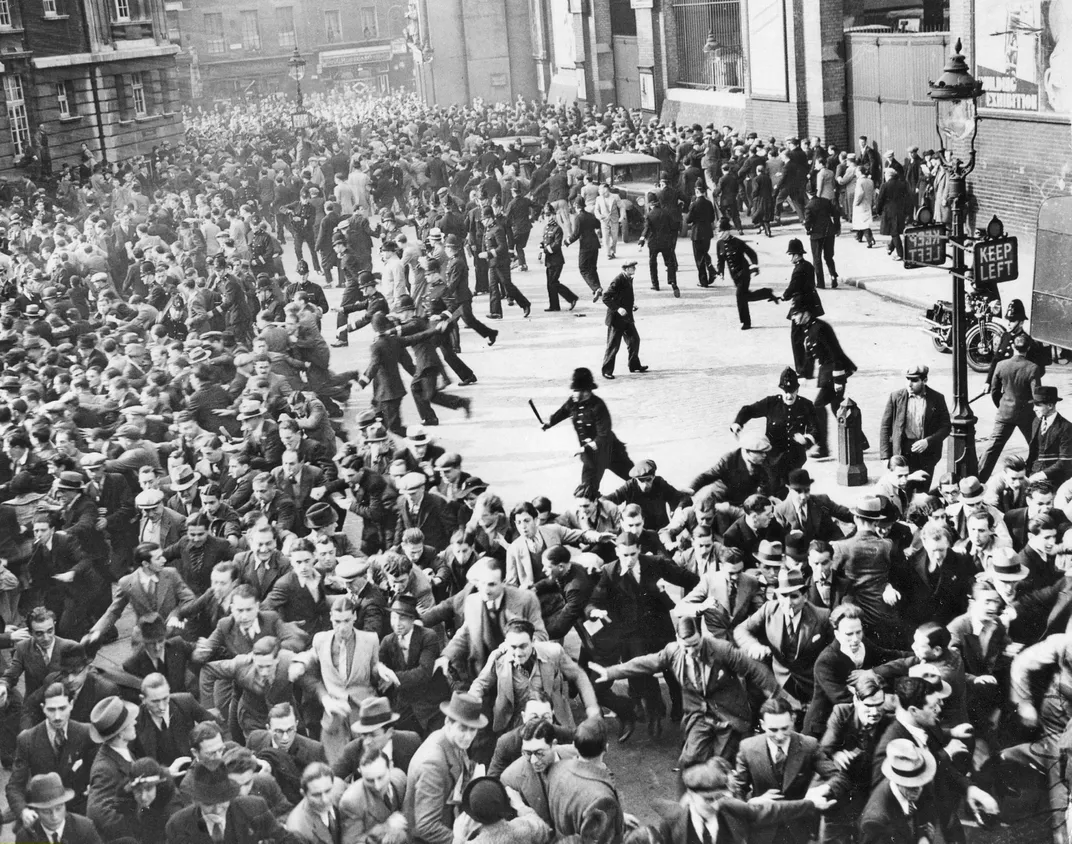
The same anti-immigrant logic that sustained Mosley’s fascism in the U.K. later appeared in Germany in the 1980s, and again antifascists stepped up to confront hate and racism in the form of Nazi skinheads who had begun to infiltrate the punk scene. This so-called third wave of anti-fascism embraced tactics like squatting while reviving the raised fist and black and red logos used by their grandparents in the 1930s .
The most radical and numerous squats were found in Hamburg, where diverse groups of young people occupied empty buildings as part of an urban counterculture that rejected both the Cold War and the legacy of fascism. When German football club FC St Pauli moved its stadium nearby, the anti-racist, anti-fascist culture of the squats became the club’s guiding principle. Even as anti-immigrant enthusiasm had returned to German politics in the 1980s, and football fan culture turned racist and violent, some German football fans—most notably those of the St. Pauli club—stood up against racism. This fan culture became legendary among the global left and the club itself embraced it: Today, the St. Pauli stadium is painted with slogans such as “no football for fascists,” “football has no gender,” and “no human being is illegal.” They've even set up a team for refugees.
The team, with its skull and crossbones logo borrowed from Hamburg’s 14th century anti-authoritarian pirate hero Niolaus Stoertebeker, might represent the coolest anti-fascism has ever been. I’ve seen their stickers in the filthy bathrooms of punk shows on three continents and saw that skull and crossbones flag at a Black Lives Matter rally this week.
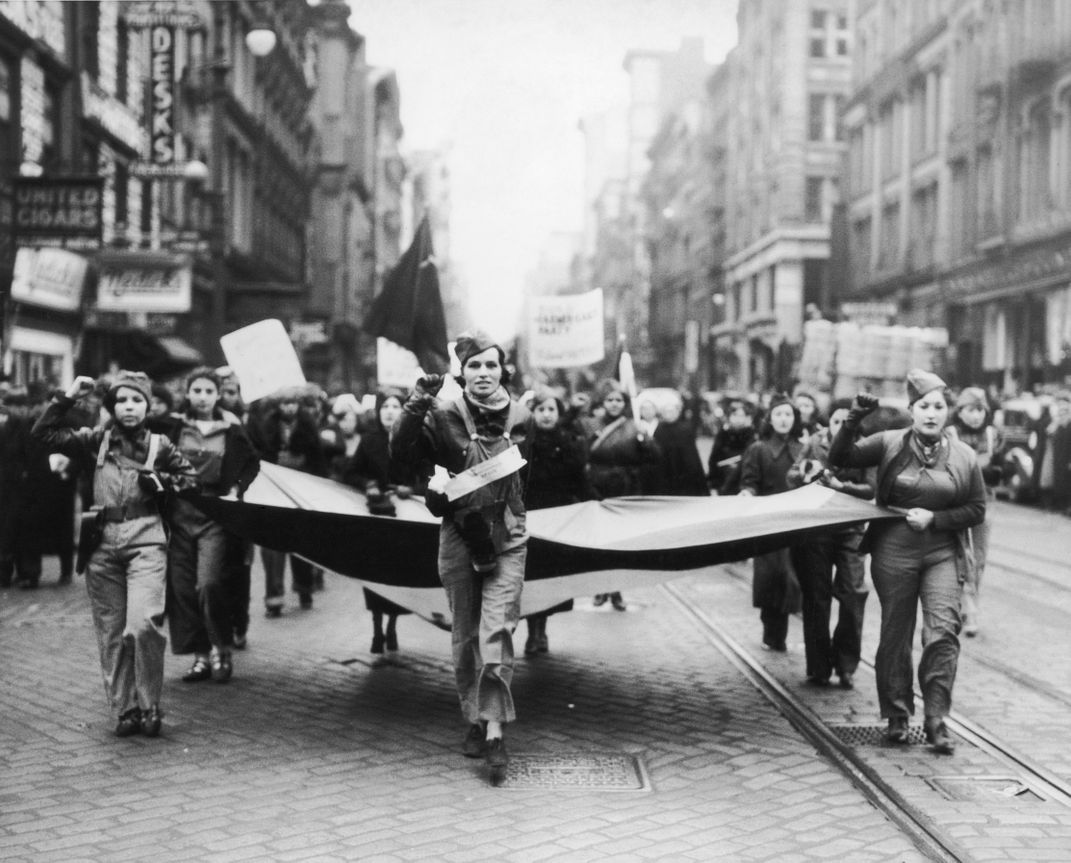
But today's anti-fascism isn’t about waving flags at football matches; it's about fighting, through direct action, racists and genocidaires wherever they can be found. Anti-fascist volunteers, drawing on the experience of their predecessors in Spain, have been quietly slipping through international cordons to northeastern Syria since 2015 to fight against against Isis and Turkish conscripts. In the Syrian region known as Rojava, just as in Republican Spain, men and women fight side by side, raise their fists for photographs and proudly display the black-and-red flag logo as they defend the Kurdish people abandoned by the world.
When Italian volunteer Lorenzo Orzettiwas killed by ISIS in 2019, the men and women of Rojava sung "Bella Ciao," an anti-fascist ditty from 1920s Italy. The song grew popular in the mountains of Syria nearly 90 years later, and today there are dozens of Kurdish recordings available. Just as anti-fascism protected persecuted Slovenes and Croats, it takes up arms to defend Kurdish autonomy today. Back in Germany, the St. Pauli keep up with the news from their confederates in Syria, and fans often hold up colored cards to form the flag of Rojava at games.
And, of course, anti-fascism has made a resurgence in the United States. In 1988 Anti-Racist Action was formed, on the basis that anti-racism and anti-fascism are one and the same and that the ARR name might be more obvious to people in the U.S. In California, Portland, Pennsylvania, Philadelphia, New York and across the country, autonomous groups have emerged to fight the rise in hate speech, stand by LGBTQIA and BIPOC people, and combat hate crime. In Virginia, the local clergy relied on Antifa to keep people safe during the “Untie the RIght” rally of 2017. Using the logo of the 1930s German antifa, the raised fist of the RFB, and the slogan No pasaran, these groups have stood in front of racists and fascists in Los Angeles, Milwaukee, and New York—just as their predecessors did at Cable Street. Even though accusations have been leveled at Antifa for turning recent protests violent, little evidence exists that those affiliated with the anti-fascist cause have been behind any violence.
Anti-fascism has changed a lot since 1921. Today's anti-fascist activists spend as much time using open-source intelligence to expose white supremacists online as they do building barricades in the street. Just as their predecessors did in Europe, anti-fascists use violence to combat violence. This has earned them a reputation as “street thugs” in some parts of the media, just as was the case at Cable Street. The Daily Mail ran the headline “Reds Attack Blackshirts, Girls Among Injured” the day after that battle, which is now largely seen as a symbol of intersectional shared identity among the London working class.
When Eluard McDaniels returned home from Spain, he was barred from employment as a merchant sailor, and his colleagues were labeled “premature anti-fascists'' by the FBI, even though the United States would end up fighting against the same Nazi Pilots just three years later. The last U.S. volunteer from the Spanish Civil War, a white Jewish man named Delmer Berg, died in 2016 aged 100. Berg, who was pursued by the FBI and blacklisted during the McCarthy Era, served as the vice president of his county’s NAACP branch, organized with the United Farm Workers and the Mexican-American Political Association, and credited his intersectional activism as the key to his longevity.
On the occasion of Berg’s death, Senator John McCain wrote an op-ed saluting this brave, “unreconstructed communist.” Politically, Mccain and Berg would have agreed on very little, and McCain notably avoided discussing the persecution Berg and his comrades faced on their return to America, but McCain did quote a poem by John Donne—the same poem that gave Hemingway’s novel about the Spanish Civil War its title. By quoting Donne, McCain suggests that anti-fascism as a basic human impulse, and Donne's poem captures the expansive humanitarian view that would motivate anti-fascists 300 years later:
Each man's death diminishes me,
For I am involved in mankind.
Therefore, send not to know
For whom the bell tolls,
It tolls for thee.